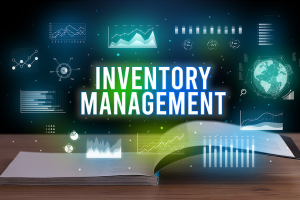 One of the most challenging aspects of any retail, wholesale, or distribution business is inventory management. Inventory represents a huge investment for most companies. Yet companies continue to manage inventory using spreadsheets or paper and pencil systems. This makes it virtually impossible to ensure accurate inventory counts—which can affect everything from your company sales to accounting.
One of the most challenging aspects of any retail, wholesale, or distribution business is inventory management. Inventory represents a huge investment for most companies. Yet companies continue to manage inventory using spreadsheets or paper and pencil systems. This makes it virtually impossible to ensure accurate inventory counts—which can affect everything from your company sales to accounting.
Throughout the ages, new technologies have come onto the scene to make inventory management easier. Barcodes and scanners were one such technology; now we have AI inventory management. Here, we take a look at the latest in AI for inventory management and how it can impact your company’s efficiency and profitability.
AI Inventory Management – the Latest Technology for an Age-Old Problem
AI isn’t new. It’s been around for many years. However, 2023 saw it break free from the constraints of chatbots and into the public consciousness with the unveiling of publicly accessible search tools like ChatGPT, Bard, and more. According to Forbes, AI is expected to add $1.3 trillion to the global economy by 2038.
How will AI impact inventory management? AI’s strengths include the ability to manage enormous amounts of data. For companies managing millions of SKUs in multiple warehouses or locations, AI makes it easier to track multiple orders, identify inventory products, and note production delays.
Improved Demand Forecasting
Remember that one of AI’s strengths is its ability to synthesize massive amounts of data. It can improve demand forecasting by ingesting customer data, product and sales data, and other data from within your company and draw conclusions by efficiently processing this information. From this data, it can extrapolate seasonal trends, customer preferences, and more, helping you predict product demand and improve demand forecasting.
Enhanced Productivity
AI is also useful to automate workflows. Many software platforms now include AI within their programming, enabling users to automate workflows, set up rules to trigger specific actions, and more. These automations help you monitor and manage cycle times, lead times, errors, quantities, temperatures in the warehouse, and even planned equipment downtime. Such automation is a huge time-saver and frees up your employees to tackle other projects.
Additionally, warehouses can be automated using AI-based tools. Warehouse automation systems can help you store products more efficiently, suggesting new placement of shelves and bins so picking and packing is faster and easier. Such systems can also batch SKUs; it can track how many SKUs will ship within a given time frame and direct workers to pick all such SKUs at once to avoid repeat trips. Some potential uses of AI inventory management include the possible use of AI, cameras, sensors, and autonomous mobile robot (AMR) systems that navigate warehouses and pick orders without human assistance.
Modernizing Order Management for Better Customer Service
Modern-day order management systems contain detailed inventory and warehouse data inside a central database. Interconnected systems allow both front and back office to view the same information. AI inventory management adds accurate, updated inventory counts that can help you maintain the right stock levels. AI can also reorder stock automatically when inventory falls below specific, preset levels. Both ensure that customers are rarely disappointed by out-of-stock messages when they place orders.
Less Downtime
Another area in which AI can be used by manufacturers is predictive analytics. As part of AI inventory management, predictive analytics can be used to learn, through the analysis of past equipment failure patterns when your warehouse equipment may require maintenance or service. By predicting maintenance or repairs, you can be proactive and address them before a major failure means days of downtime.
Reap the Benefits of AI Inventory Management
Often, it can feel like the world is changing so rapidly that it is hard to keep up with all the advancements in technology. AI can feel overwhelming; what can it do, and what can’t it do? Where does it fit in my organization and how can we use it effectively?
If you’re wrestling with where AI fits in your overall business approach, consider testing AI inventory management features. Even a small test may yield big benefits, and a pilot or test program offers a manageable, low-risk way of embracing AI.
Emerald TC
Emerald TC provides consulting, sales, implementation, and support of cutting-edge technologies. We can help you sort through the many choices available and choose the right approach for your business. Contact us to get started.

